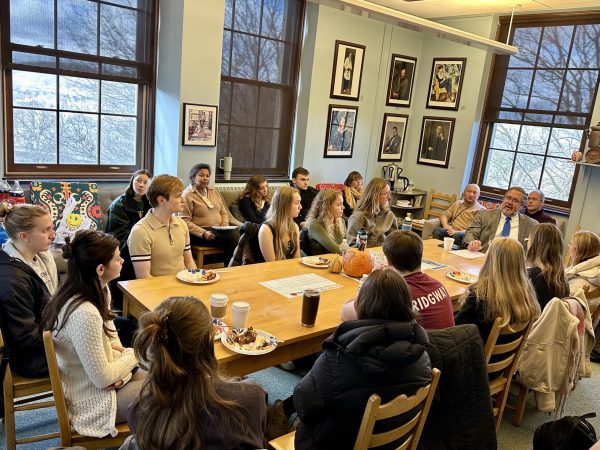US Hockey Olympic-Sized Embarrassment
Beginning with a 3-3 tie to Latvia, the U.S. men’s hockey has stumbled its way through this year’s Olympics. With its lone win coming against such a titan of hockey as Kazakhstan, Team USA somehow qualified for the preliminary medal round with a 1-2-1 record. Any ambitions for the gold that may have still existed were quickly extinguished, however, with a 4-3 loss to Finland on Wednesday.
Although Team USA lost all of its games by only a single goal, it played poorly against the Swedes, Russians, Latvians and Kazakstanis. In an earlier article, I predicted that goaltending would be the Achilles heel of the American squad. While the goaltending was not spectacular, it was solid enough to keep Team USA in all of its games. Unfortunately, the real problem was an anemic offense that could not produce.
U.S. forwards also had the misfortune of going against several goalies who were riding hot streaks. In the game against Latvia, Arturs Irbe put together a spectacular performance, stopping 39-of-42 shots. In the 2-1 loss to Slovakia, the Americans held a 30-21 advantage in shots, but they were simply unable to get the puck past goaltender Peter Budaj more than once.
This has also been a year for upsets, and the playing field has been very level. Team Canada was also defeated in single elimination by Team Russia. Finland, surprisingly, does not have a loss, and should pose a very tough challenge should Peter Forsberg remain healthy. Team USA arguably played its best game against the Finns, but their best effort was just not enough.
The problem is not bad luck alone, however. The American team has a nice influx of youth, with emerging NHL stars like Erik Cole, Scott Gomez and Craig Conroy, but its veterans are mostly past their prime. Billy Guerin, Mike Madono, and Keith Tkachuk were all top-notch players a few years ago, but they are too old to keep up with the rigors of Olympic play, where the wider ice favors the team with the fastest skaters. It is little wonder then, that the American offense has been gobbled-up repeatedly by quick, Eastern European defenses.
In 2002, a strong veteran presence gave Team USA the grit and determination needed to win a silver medal. However, veterans who were productive in that series were unreliable this time around. Perhaps it is just a transition stage, a changing of the guard as a new generation of NHL players cut their teeth in Olympic play. After all, the U.S. team has traditionally played well in this tournament, and a lackluster series is hardly a cause for alarm.
Planners for 2010 will have to construct the team with more of an eye toward the quality of competition. North American skaters are traditionally big and hard-hitting, but they can get chewed apart when facing the skilled sniping teams from Eastern Europe. The trick is to find a balance between experience and youth, size and speed. The U.S. will need to have enough checkers to punish opposing forwards, but it cannot rely on hitting power alone. The Olympic competition’s wide ice makes a game plan built around power difficult to execute.
Hopefully by 2010, there will be a consistent American All-Star presence in net. Although the American goaltenders played well, Team USA lacked that imposing name between the pipes. Having a Brodeur or Hasek behind a squad gives teams a mental edge, allowing them to take more offensive risks and forces other teams into a mindset where they have to make a perfect shot to register a goal.
Mike Richter played the series of his life in 2002, and Team USA profited immensely. Whether Robert Esche, John Graham or Rick DiPietro develop into the type of big-game goalie who can lead the US further in international competition, or a new force comes around in the next four years, it is vital for the U.S. men’s coaches to put the best team on the ice, starting from between the pipes.





